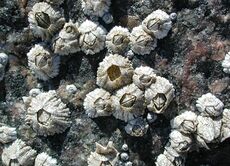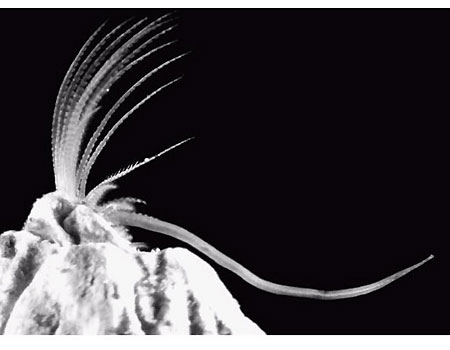Barnacle
Barnacles are aquatic creatures. They are extremely boring creatures, despite them having the largest penis to body size ratio of the animal kingdom. This is why I'm not going to talk about barnacles. Instead I'm going to tell you the fascinating history of my Wikipedia article about barnacles, because that's obviously a lot more interesting and—more importantly—funny.
So I was looking up stuff on Wikipedia and noticed barnacles didn't have an article yet. Intelligent as I am, I decided to write it myself.
| “ | The barnacle is an animal parasitic organism which attaches to the skin of marine animals and some other surfaces too. | ” |
That one sentence constituted my whole article about barnacles. I know. I was such a n00b back then. I didn't even know what a parasite was back then. Hah! Come on, laugh! That's funny, darn it!
Alright, so you probably think my article was instantly deleted, right? Wrong! Somebody added this annoying template to my page telling me I'd have to improve my article or else it'd be deleted.
Terribly annoyed at having to improve my article, I looked up some stuff about barnacles. It turns out they're crustaceans. Who would've thunk it? I mean, they don't look like crustaceans at all! So anyway, I copied some stuff from some website and removed the template. This is what the article looked like at that point:
| “ | The barnacle (Semibalanus balonoides Linnaeus) is a crustacean belonging to the Cirripedia. It attaches itself to all kinds of surfaces: wood, rocks, shells, even whale skin.
The shell is white and rock-hard. The shape can be conical but in dense populations they can grow into huge pillars. The shell is made up out of six calcite plates, with a tiny lid made up out of two calcite plates. When below the water surface, this tiny lid continuously opens and closes. When it opens the barnacle sticks out two tiny arms. It uses these to generate water current from which the little animal sifts its food. Young barnacles swim about freely. |
” |
The first sentence already illustrates my initial unfamiliarity with biological classification: The species name is formatted completely wrong. Worse yet, it shouldn't be a species name at all, because there's lots of different barnacle species.
Now, guess what happened next. Some idiot re-added that obnoxious template. Yelling a variety of expletives related to this idiot's mom, I searched for some more things to add to my article. Eventually, I found some information and added the following sections to my article:
| “ |
HabitatThe barnacle can survive at various places, but are most common in tidal waters. They can be found on rocky shores, growing on top of mussels, but they can also be found attached to humpback whales swimming in the Arctic seas. FeedingThe barnacle never has to look for food. The only thing it needs to do is 'come out of its shell' a little. They only come out underwater, when they stick out six pair of long legs, the cirri. By moving their cirri, they can swirl water with food particles into their direction. The barnacle's food mainly consists of plankton and pieces of shell. When a number of barnacles group together, catching plankton becomes a lot easier because all those waving legs generate water current. The more the merrier. DevelopmentLarvae barnacles can still swim around freely. Later on, the larva builds a calcite shell, reminiscent of the shell of a mussel or a snail. It then attaches itself to the substratum, a rock or something. The calcite shell grows increasingly harder. ReproductionBarnacles are hermaphroditic. When mating, the penis grows terribly long, enabling proximate animals to be fertilized. |
” |
In case you don't know what hermaphroditic means, it means that a barnacle can fuck and be fucked at the same time, with both actions resulting in offspring. The scary thing is, a barnacle can use its humongous flexible penis to fertilize itself, resulting in masturbation babies.
And now... Here's what you've all been waiting for! The barnacle penis!
Well, what did you expect? A huge human penis on some weird kind of shellfish? Get real, dude.
What became of my article? Some other people improved it. I discovered that my article was actually about acorn barnacles specifically, which are called sea pox in my native language. And we all lived happily ever after.
And in case you're wondering, yes, I've actually written this article. No, it wasn't actually in English. Yes, this article gives a whole new meaning to the phrase "go fuck yourself".
Oh, and if you think I suck, you should read the first revision of the English Wikipedia article "Barnacle":
| “ | A type of Arthropod, and as such related to the crabs and lobsters, but of the order Cirripidea. The barnacle spends its early life as part of the plankton, floating wherever the wind, waves, currents, and tides send it, surrounded by a bivalve shell. It then settles down in an area where environmental cues indicate is a safe and productive environment. It sticks its legs in the air, and develops six hard plates to surround the body. For the rest of its life it's cemented to the ground, using the feathery legs to capture plankton and gametes when spawning. It is usually found in the intertidal zone. | ” |
Haha, what a dork!

